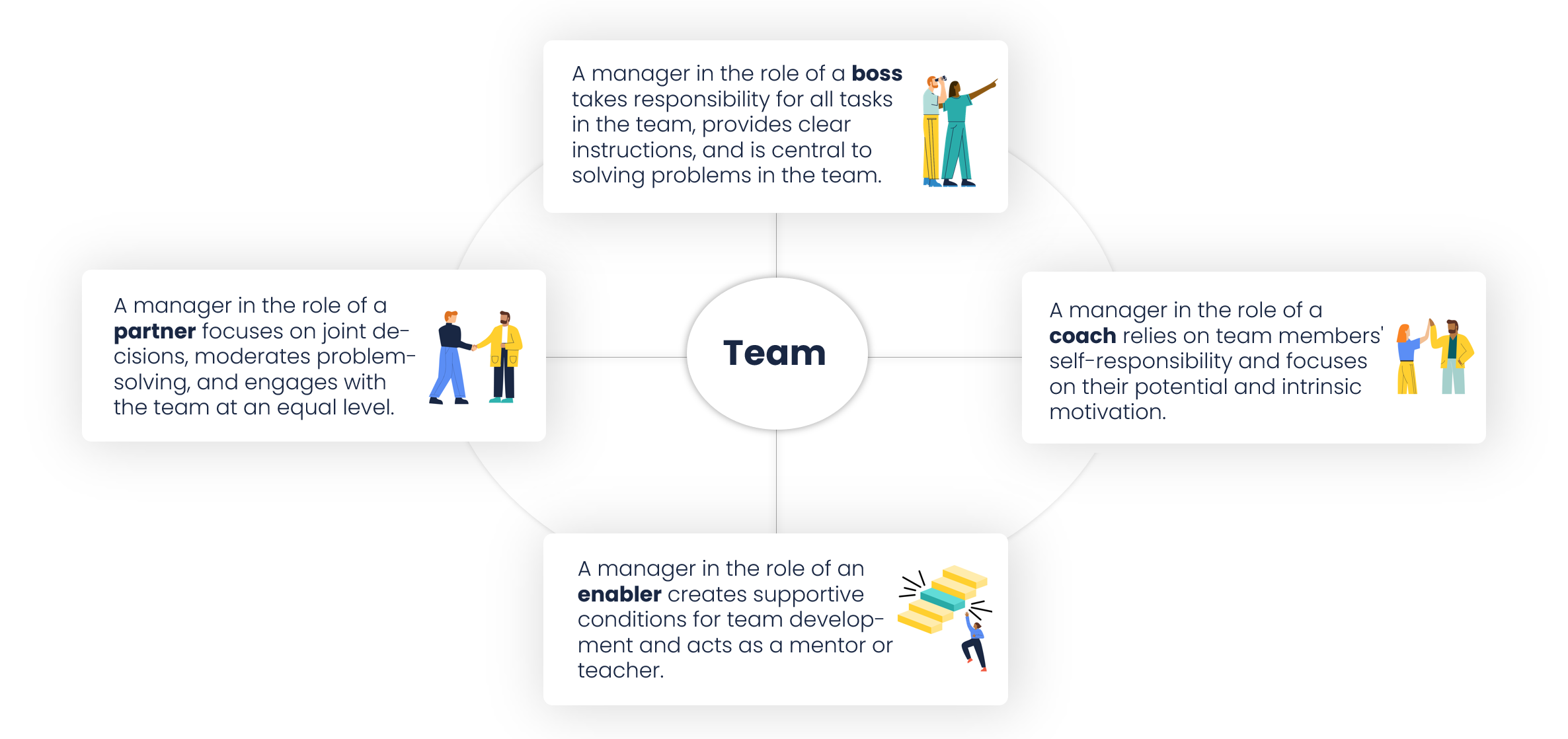Before the survey: Reflecting on your leadership
You are a manager and are planning on conducting the Leadership Role Compass Survey? In our experience, you can maximize the benefits of the Leadership Role Compass survey by taking a few preparatory steps. These steps ensure a smoother process and provide deeper insights for your leadership development.
In short, the preparatory steps are:
- Step 1: Familiarize yourself with the four different leadership roles.
- Step 2: Reflect on your leadership context.
- Step 3: Tell your team members why you value their feedback and encourage them to participate.
For more details on each step, see the information below.
Step 1: Familiarize yourself with the four different leadership roles
Our leadership model is based on Professor Armin Trost's field-tested leadership model and distinguishes four different leadership roles:

For more information about the Leadership Role Compass, you can read this article.
How can you reflect on the four leadership roles? In our experience, the best way to reflect on leadership roles and understand your current approach is by analyzing your behavior in typical day-to-day situations as a leader. Here are two example scenarios (Trost, 2023) with typical responses for each leadership role. You can also use any situation from your daily work to reflect on your own behavior.
| Example scenario 1 | Example scenario 2 |
|
A team member emails you a proposal and asks for your approval as their manager.
|
Two employees are engaged in an ongoing personal conflict, which is disrupting their environment and dampening the team’s morale.
|
Step 2: Reflect on your leadership context
Understanding the various factors that shape the leadership context is crucial, as they influence which leadership roles are appropriate.
Example: If you as a manager hold the most expertise in the team, and team members come to you for your specialist competence, then the roles of a boss or coach are more appropriate than responding to this as an enabler or partner.
Take some time to reflect on your leadership context. Here are some factors (among others) that shape it:
|
The team's tasks
|
The team members
|
|
Group characteristics
|
The team within the organization
|
Good to know: While the leadership context influences which roles are most suitable, the relationship is not straightforward or one-dimensional. The reality is more complex and layered. Ultimately, your reflection on the leadership context will help you develop a more nuanced and contextually aligned leadership approach, and this is the crucial point of this reflection.
Step 3: Tell your team members why you value their feedback and encourage them to participate
You can perform this step in whatever way suits you best. If you are looking for inspiration, check out our e-mail template that you can send to your team members in preparation for the upcoming Leadership Role Compass survey. You can find the template at the bottom of this article: Timeline for managers: Running the leadership survey
Source
Our approach is based on Professor Armin Trost's, PhD, field-tested leadership model: Trost, Armin (2023). Das richtige Führungsverständnis. Wie Sie Ihre Führungsrolle definieren, vermitteln und wirksam umsetzen. Berlin: Springer.